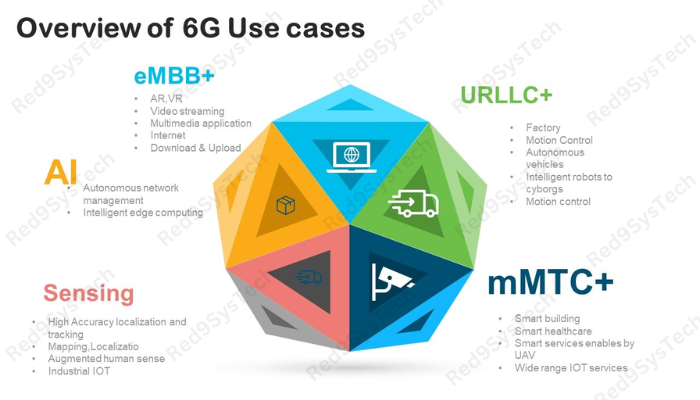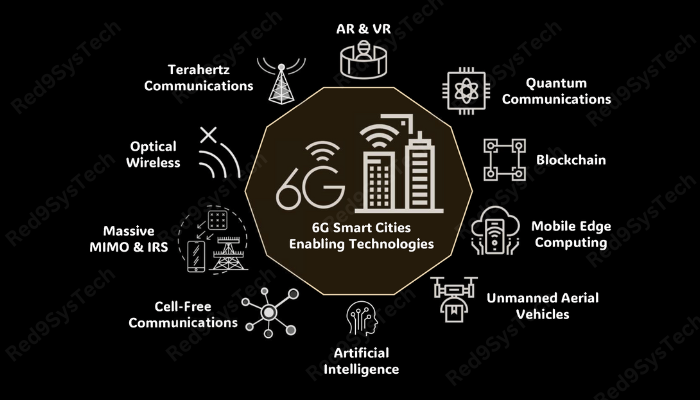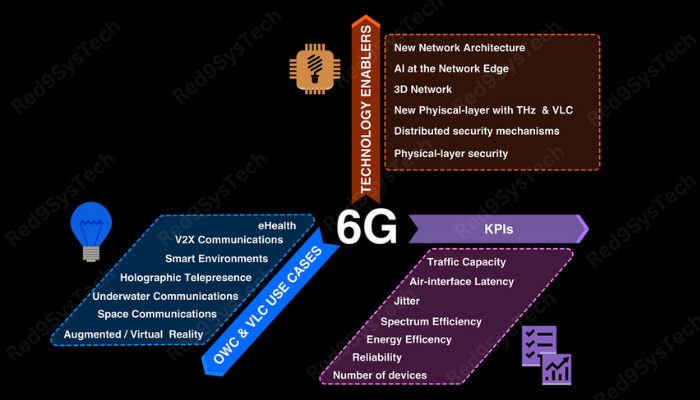How 6G Technology is Shaping the Future of Connectivity
From dial-up to 5G, each wireless generation has revolutionized how we connect. But now, the world is setting its sights on 6G technology, expected to redefine digital communication with speeds 100x faster than 5G, AI-native networks, and real-time immersive experiences.
Let’s explore how 6G will shape the future of connectivity across industries, and what it means for businesses and everyday life by 2030.

What is 6G Technology?
6G, or sixth-generation wireless technology, is the next leap in mobile communications, expected to roll out commercially around 2030. Built on the foundations of 5G, it promises:
1 Tbps speeds (vs 20 Gbps in 5G)
Latency < 1 millisecond
AI-driven intelligent networking
Integration with satellite and terrestrial networks
Support for XR, holography, and digital twins
It’s not just faster internet—6G will power intelligent, fully connected ecosystems.
Key Technologies Powering 6G
1. Terahertz (THz) Spectrum
Enables ultra-fast, high-frequency transmission
Overcomes current data bandwidth limits
Powers real-time AR/VR, holographic calls
2. AI-Native Networks
AI is integrated directly into the network core
Predicts traffic, optimizes bandwidth, and auto-heals disruptions
Reduces latency and improves efficiency
Explore AI & Machine Learning: The Future of Technology
3. Quantum Communication
Enhanced encryption and ultra-secure transmission
Supports secure communications for defense, finance, and healthcare
4. Edge & Cloud Integration
Dynamic workloads between edge devices and cloud
Real-time analytics and AI decision-making at the edge
How 6G Will Impact Daily Life
Seamless multi-device connectivity (e.g., phones, wearables, holograms)
Digital assistants that anticipate and automate needs
Ultra-fast cloud computing for real-time data access
Personalized AI-powered services in education, entertainment, and healthcareCountries Leading the 6G Race

Countries Leading the 6G Race
South Korea: Samsung and LG investing heavily in 6G
China: Huawei and ZTE conducting pilot projects
USA: Next G Alliance formed by AT&T, Qualcomm, Apple, and Google
Japan & Europe: Nokia, Ericsson, and NTT pursuing government-backed 6G initiatives
External Source: IEEE 6G Roadmap
External Source: Samsung 6G Vision White Paper
Challenges of 6G Adoption
Infrastructure Investment
Requires upgrading millions of base stations and spectrum licenses
Energy Consumption
Higher frequency use may increase energy requirements
Privacy & Cybersecurity
Billions of connected devices = expanded threat surface
Global Standards
Harmonizing protocols and regulations across countries

When Will 6G Be Available?
2024–2026: R&D, simulation, and pilot testing
2027–2029: Global standardization and ecosystem building
2030: Commercial launch in advanced markets
2031+: Global rollout across devices, regions, and industries
Preparing for a 6G Future
Invest in AI, cloud, and edge infrastructure
Upskill teams in network automation and AI systems
Design future-proof products that adapt to 6G capabilities
Follow policy and compliance guidelines around data & security
Learn Skills You Need for 2025: ChatGPT Prompt Engineering
Qualcomm’s 6G Overview

Conclusion
6G will redefine global connectivity—ushering in an era of instantaneous communication, immersive experiences, and AI-powered networks. As industries prepare to adopt this next-gen technology, the focus must remain on infrastructure, skills, privacy, and ethical innovation.
Are you ready for the 6G revolution? The future is already in motion.




